 March 3, 2016 John E. Ross, KD8IDJ, Editor
| |||||||||||
US Amateur Radio Numbers Continue to Soar Amateur Radio is alive and well! Growth in the US continued in 2015, with a record 735,405 licensees in the FCC's Universal Licensing System (ULS) database by the end of the year. That's up 9130 over December 2014, a 1.2 percent rise, continuing a steady increase in the US Amateur Radio population in every year since 2007. In 2014, the ranks grew by a net 8149 licensees. The figures, compiled by ARRL Pacific Section Manager-elect Joe Speroni, AH0A, on his FCC Amateur Radio Statistics web pages, exclude expired licenses within the 2-year grace period and club station licenses. Over the past 10 years, the Amateur Radio population in the US has expanded by 72,805 licensees -- or nearly 11 percent.
As expected, the biggest growth by license class was in Technician licensees, which rose by 6570 in 2015. Technician licensees still comprise a little less than one-half of the US Amateur Radio population. General ranks increased by 3079, and Amateur Extra numbers went up by 3496. The 2015 overall numbers faltered a little in April, before rebounding in July. The introduction of a new General class question pool on July 1 appeared to have only a slight effect on month-to-month numbers in that license class. ARRL VEC Manager Maria Somma, AB1FM, said 2015 was another banner year for ARRL VEC-sponsored test sessions. "For the second year in a row, we have conducted more than 7000 Amateur Radio exam sessions in a year, an important milestone for the
ARRL VEC," she said. "A total of 7358 ARRL-sponsored exam sessions were administered in 2015, compared to 7216 in 2014. The number of exam applicants was down slightly in 2015, compared to the previous year, and the number of examination elements administered also dipped slightly, she noted. "Since 2014 was a record-setting year, the numbers of 2015 examinees didn't drop so much as return to more typical levels," Somma explained. As of December 31, some 47,850 Advanced and 10,800 Novice licensees remained in the FCC database. The FCC no longer issues Advanced and Novice licenses, and their numbers continue to decline. Read more. -- Thanks to Joe Speroni, AH0A; FCC ULS licensing statistics ARRL Chief Operating Officer Harold Kramer, WJ1B, Retires On February 26, the ARRL Headquarters staff bid farewell and a happy retirement to Chief Operating Officer Harold Kramer, WJ1B, as he wrapped up 11 years at ARRL Headquarters. His last official day on the job was March 1. At a retirement party, staff members presented Kramer with an antique clock from a Waterbury, Connecticut, clock maker -- a particularly fitting gift, as he was born in Waterbury. "I was glad to have him as a colleague and a friend," said ARRL CEO David Sumner, K1ZZ -- who will depart ARRL Headquarters himself on April 18, after more than 4 decades. Sumner cited several of Kramer's contributions during his "one sunspot cycle" on the staff. These included arranging for some League publications to be published in Chinese in China, digital publishing -- especially books on Kindle, recruiting authors of new publications, and his participation in the development of the League's new Strategic Plan.
Sumner also noted that Kramer took the initiative to organize the W1Q special event marking the 100th anniversary of QST in 2015. ARRL Marketing Manager Bob Inderbitzen, NQ1R, praised Kramer for making the League and its programs more visible to members. "Through his 'Inside HQ' column, hundreds of personal tours, loads of hamfest and convention travel, radio club meetings, and shaking a lot of hands -- Harold packaged the contributions of ARRL and every staff person, and delivered that story to members, prospective members, and loads of friends and visitors," Inderbitzen said. Kramer said he is proud of what he and the ARRL Headquarters staff accomplished together during his tenure, including the response to Hurricane Katrina. He also cited the upgraded ARRL website and the League's enhanced presence in digital publishing -- including a digital edition of QST.
"One of the things that I am most proud of was being the co-chairman of the Centennial Convention -- one of the best-ever ham radio conventions, and the centennial QSO Party -- the largest operating event in ham radio history," Kramer told the staff. As for his plans, Kramer, whose principal focus has been on emergency communication, said he's hoping to finally put up the tower and beam he's been talking about for the past decade and may even return to the Connecticut Field Organization, where he was once an EC. A book and some QST articles are definite possibilities, he added. "You have been a great group to get to know and to work with," Kramer said. "I've been proud to call you my colleagues." Read more. ARISS Celebrates its 1000th Educational Amateur Radio Contact with Video Amateur Radio on the International Space Station (ARISS), the first-ever ISS payload activated by the crew, is gearing up for its 1000th educational ham radio contact in March. A video jointly produced by ARRL, NASA, and AMSAT, titled, "Celebrating the 1000th Contact," has been posted on YouTube.
ARISS celebrated 15 years of a permanent ham radio presence in space last December. In 2000, several pupils and a teacher got to chat on 2 meters with the first ISS Commander, William "Shep" Shepherd, KD5GSL. Since that first ARISS school contact, astronauts and cosmonauts aboard the station have talked with students in 44 states in the US and in 51 other countries. ARISS anticipates the 1000th educational radio contact will occur during March. On an application basis, ARISS organizes scheduled Amateur Radio contacts between ISS crew members and students at a school or less-formal education venue. Experienced Amateur Radio volunteers work with ARISS and individual schools to handle the technical aspects. Through these radio contacts, students, educators, parents, and communities learn about space, space technologies, and Amateur Radio.
ARISS Online Information Session The ARISS program coordinator will offer an online information session on March 10 at 7 PM ET for schools and organizations interested in hosting an Amateur Radio contact with a member of the International Space Station crew. The hour-long session is aimed at providing additional details regarding US ARISS contacts and the proposal process. There will be an opportunity to ask questions. Advance registration is required. Contact ARISS to sign up. Prospective ARISS contact sponsors are not required to attend an online information session, but they are strongly encouraged to do so. ARRL Teachers Institute on Wireless Technology Announces 2016 Schedule The deadline is May 1 for educators to apply for a spot in this summer's ARRL Teachers Institute on Wireless Technology sessions. These educational opportunities are offered by the ARRL Education & Technology Program (ETP). Two introductory sessions and one advanced session are scheduled. The Introduction to Wireless Technology course (TI-1) will be presented June 20-24 at Parallax Inc in Rocklin, California, and July 25-29 at ARRL Headquarters in Newington, Connecticut. The advanced Remote Sensing and Data Gathering course (TI-2) will be offered July 18-21 at the Dayton Now in its 13th year, the ARRL Teachers Institute is an expenses-paid, intensive professional development opportunity for educators who want to receive training and resources to explore wireless technology in the classroom and integrate science and math with engineering and technology. Applicants must be teaching in a school, college, or professional educational organization serving grade levels 4-12+, or leading a school-affiliated enrichment program in an official capacity. Visit the ARRL website for more information, and to download and complete an application and the pre-workshop survey. Donations to support the ARRL's efforts to promote Amateur Radio in schools and to provide professional development to education are welcome. Read more. National Parks on the Air Update
SSB is by far the most popular mode, with 88.4 percent of all NPOTA QSOs made with a microphone. CW comes in a very distant second, with 10.3 percent, and digital at 1.2 percent. There are 26 NPOTA activations listed for March 3-9, including Cabrillo National Monument in California (MN09), and the Lincoln Boyhood National Memorial in Indiana (NM15). Details about these and other upcoming activations can be found on the NPOTA Activations calendar. Keep up with the latest NPOTA news on Facebook. Follow NPOTA on Twitter (@ARRL_NPOTA). ARES Groups, Individual Hams Support Army and Air Force MARS Communications Exercise On February 12, more than 300 Amateur Radio Emergency Service (ARES) members and individual radio amateurs participated in the first quarterly Military Auxiliary Radio System (MARS) US Department of Defense communications exercise of 2016 (COMEX 16-1). US Army and Air Force MARS operators across the US, Europe, and the Pacific took part in the 12-hour Department of Defense (DOD) contingency HF communication exercise, which simulated a widespread loss of telephone and Internet communication across the US. MARS operators reached out to ARES members and individual hams in as many US counties as possible to obtain status reports via radio.
English said the supported Department of Defense headquarters entities "were very pleased with the outcome of the exercise, and especially with the number of Amateur Radio stations that participated on a weekday and the number of unique county reports received over the 12-hour period." After eliminating duplicates, English said, MARS received 312 county status reports. The exercise aimed in part to develop local-level working relationships between MARS operators and ARES groups and individual radio amateurs and clubs, English said. Armed Forces Day 2016 Communication Test to Include Direct Military-Ham Contact on 60 Meters This year's Armed Forces Day Crossband Communication Test on Saturday, May 14, will include a significant new wrinkle: Select military stations will be using 60 meter interoperability channels to communicate directly with Amateur Radio stations on the band. Back this year, select military stations will use crossband Automatic Link Establishment (2G ALE) communication as well as MIL-STD Serial PSK to send the Secretary of Defense Armed Forces Day message. Armed Forces Day 2016 is Saturday, May 21, but the radio event is held earlier to avoid conflicting with Dayton Hamvention, May 20-22.
The Army, Air Force, Navy, Marine Corps, and Coast Guard cosponsor the joint military/Amateur Radio, with military stations transmitting on military frequencies and listening on Amateur Radio bands. Amateur Radio stations and shortwave listeners interested in trying the MIL-STD Serial PSK mode can download the software program, MS-DMT. Full details about this year's Armed Forces Day radio will be posted by April 12 and will also appear on the US Army MARS Facebook page. Regulators Attend Amateur Radio Administration Course in Mexico City Telecommunications regulators from Mexico and Belize attended an
Amateur Radio Administration Course (ARAC) February 17-19 in Mexico City. International Amateur Radio Union Region 2 (IARU R2), the Mexican Federation of Radio Amateurs (FMRE), and the ARRL sponsored the sessions. Presiding at the opening ceremony was Rafael Eslava Herrada, who heads the Concessions and Services Unit of Mexico's telecoms regulator, the Federal Institute of Telecommunications (IFT). Among others, course topics included:
Regulators from the Public Utilities Commission of Belize and Mexico's IFT attended the classroom sessions. The objective of the course is for regulators to be able to help create, administer, and foster an Amateur Radio Service within their home countries. The ARAC is designed for those who regulate and manage Amateur Radio, and it was taught in both English and Spanish. Texas to Host US ARDF Championships in April The US championships of Amateur Radio Direction Finding (ARDF) return to the Lone Star State this spring. Sponsored by Texas ARDF and the Austin Orienteering Club (AOC), the event will take place April 7-10 near Killeen, Texas. On-foot foxhunting fans of all skill levels will gather for 4 days of intense competition.
An optional training day just prior to the championships on Wednesday, April 6, will feature an 80 meter short course. Thursday, April 7, will be devoted to foxoring, a combination of radio direction finding and classic orienteering, on 80 meters. Friday morning will be the formal 80 meter sprint event, followed by a catered lunch, competitor meeting, and model event for equipment testing.
Classic 2 meter and 80 meter competitions will take place on Saturday and Sunday, respectively. An awards banquet on Saturday evening will honor winners of the foxoring, sprint, and 2 meter classic events. Awards for the 80 meter classic event will be given Sunday afternoon, immediately following the competition. Lead organizers, event hosts, and course planners are Jennifer and Kenneth Harker, W5JEN and WM5R, assisted by members of the Austin Orienteering Club. Stateside winners of the US championships will be considered for membership in ARDF Team USA, which will travel to Albena, Bulgaria for the 18th ARDF World Championships. Full details are on the Texas ARDF website. Read more. -- Thanks to ARRL ARDF Coordinator Joe Moell, K0OV "Frequency" TV Series Now Planned for The CW Network The buzz from Hollywood is that a TV series based on the 2000 movie "Frequency" is in development and -- appropriately enough for a show featuring ham radio -- on The CW network. Amateur Radio served as a plot device in the movie and will play the same role in the TV series.
In November 2014, The Hollywood Reporter indicated that NBC had committed to a "Frequency" series, but those plans apparently fell by the wayside. Now, The CW has ordered a pilot episode of "Frequency," and, if the network does go forward with the project, the modern-day version of "Frequency," the TV series, would feature a young female police detective named Raimy, who uses ham radio to communicate through time with her deceased father. Actress Peyton List is said to have landed to role of Raimy, reprising Jim Caviezel's movie character. Riley Smith would play her father. When the original "Frequency" movie debuted, the ham radio theme and the chance to see vintage ham gear and real, glowing vacuum tubes on the big screen generated considerable interest within the community of "boatanchor" enthusiasts. ARRL worked with the film's producers. First Solid-State Transmitter to Span the Atlantic Now Part of ARRL Historical Collection A flea-powered transistor ham transmitter built in the 1950s and later used to make a transatlantic contact has become part of the ARRL Historical Collection. The noteworthy historical artifact was donated by Andy Stewart, KB1OIQ, on behalf of the estate of Gus Fallgren, W1OG (SK), the ham who was at the key for the momentous event. Fallgren --
then W1OGU -- and two other Raytheon engineers, Al "Hank" Hankinson, W1OSF, and Dick Wright, W1UBC, built the little transmitter in the summer of 1956 on a lark, to see if they could achieve Worked All Continents (WAC) with it. The 20 meter, 78 mW transmitter was designed around a pair of Raytheon 2N113 transistors -- one as a 7 MHz oscillator, the other as a frequency-doubling power amplifier. On September 18, 1956, Fallgren, in Chelmsford, Massachusetts, running the transistor transmitter into a three-element wide-spaced Yagi, worked OZ7BO in Copenhagen, Denmark. His signal report was 339. The transmitter was the first to run Raytheon transistors on 20 meters. Hams had previously constructed low-power, solid-state transmitters for 40 meters and made contacts spanning up to 800 miles. Fallgren's 3800-mile contact worked out to approximately 47,500 miles per watt.
Raytheon documented the historic contact in the February 1957 edition of Radio and Television News -- with a feature banner and cover photo of W1OGU in his shack with the battery-powered transistor transmitter -- and it was reported in other publications as well, including Raytheon's own publication and the Boston Globe. A November 1956 QST "Stray" reported that Fallgren had "worked KP4, TI2, OZ7, and G3, and has reportedly been heard in VK" with the little rig, and included a photo. Assistant ARRL Laboratory Manager Bob Allison, WB1GCM, staff liaison to the ARRL Historical Committee, accepted the donation and thanked Stewart for arranging it. Read more. Getting It Right! Getting It Right! In "Article Profiles First African-American Radio Amateur, Rufus Turner, W3LF," which appeared in the February 25 edition of The ARRL Letter, we inadvertently -- and incorrectly -- added an "A" to the designation of the diode Mr Turner helped to develop. The diode the article refers to is the 1N34, not the later 1N34A, which typically had a hermetically sealed glass envelope. Thanks to Frank Donovan, W3LPL, for spotting this error. In Brief...
. . . . . . The K7RA Solar Update Tad Cook, K7RA, Seattle, reports: Average daily sunspot numbers were marginally higher over our reporting week (February 25-March 2) than during the previous 7 days -- rising from 37.9 to 41.4. Average daily solar flux was down by just one point, to 92.9. The average planetary A index dipped from 10.1 to 5.9, and the average mid-latitude A index declined from 12.6 to 5.3.
The planetary A index prediction shows 8 on March 3-4; 12, 20, 15, 10, and 5 on March 5-9; 8 on March 10-11; 5 on March 12, and 12 on March 13. The predicted A index then makes a huge jump to 30 on March 14-16. This is perhaps the result of a recurring coronal hole, because on April 10-12 the A index again goes to 30. Note that there were similar numbers -- 38, 34 and 29 -- for February 17, 18 and 19. Sunspot numbers for February 25 through March 2 were 26, 41, 37, 38, 44, 39, and 65, with a mean of 41.4. The 10.7 centimeter flux was 91.7, 89, 90.4, 93.2, 90.9, 96.8, and 98.2, with a mean of 92.9. Estimated planetary A indices were 5, 7, 4, 4, 5, 9, and 7, with a mean of 5.9. Estimated mid-latitude A indices were 6, 5, 3, 4, 4, 8, and 7, with a mean of 5.3. This week's bulletin will look at changes in our 3-month moving averages of sunspot numbers, which should indicate the further decline in the current solar cycle. We'll also have a quantitative report from NP3A on band-by-band changes in CW Skimmer logs between the ARRL International DX Contest 2015 and 2016 numbers. Send me your reports and observations. Just Ahead in Radiosport
See the ARRL Contest Calendar for more information. For in-depth reporting on Amateur Radio contesting, subscribe to The ARRL Contest Update via your ARRL member profile e-mail preferences. Upcoming ARRL Section, State, and Division Conventions and Events
Find conventions and hamfests in your area.
. . .
Subscribe to...
Free of charge to ARRL members...
| |||||||||||
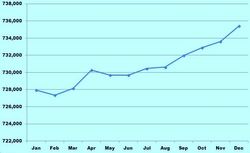

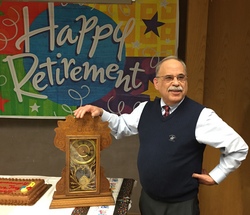
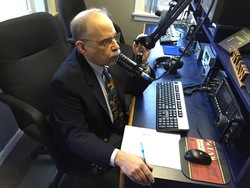
.jpg)
.jpg) ARISS touches tens of thousands of students per year. One ARISS goal is to inspire an interest among young people in science, technology, engineering, and math (STEM) subjects and in STEM careers. Another is to provide an educational opportunity for students, teachers, and the public to learn about space exploration and satellites, as well as about wireless technology and radio science through Amateur Radio.
ARISS touches tens of thousands of students per year. One ARISS goal is to inspire an interest among young people in science, technology, engineering, and math (STEM) subjects and in STEM careers. Another is to provide an educational opportunity for students, teachers, and the public to learn about space exploration and satellites, as well as about wireless technology and radio science through Amateur Radio.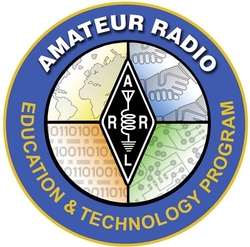
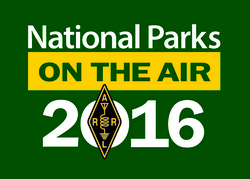 National Parks on the Air (
National Parks on the Air (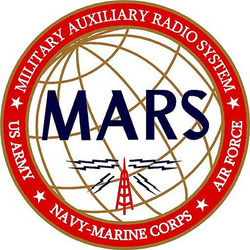 "The purpose of the exercise was to give MARS operators the opportunity to demonstrate their proficiency in responding to DOD requests for simulated emergency situational awareness reports from counties across the United States," Army MARS Program Manager Paul English, WD8DBY, explained. "DOD and the MARS leadership want to thank the more than 300 Amateur Radio operators who assisted in making this exercise a success by providing local county information using VHF, UHF, and NVIS HF voice communications."
"The purpose of the exercise was to give MARS operators the opportunity to demonstrate their proficiency in responding to DOD requests for simulated emergency situational awareness reports from counties across the United States," Army MARS Program Manager Paul English, WD8DBY, explained. "DOD and the MARS leadership want to thank the more than 300 Amateur Radio operators who assisted in making this exercise a success by providing local county information using VHF, UHF, and NVIS HF voice communications."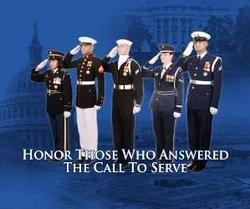 The annual Armed Forces Day Communication Test is an opportunity to exercise two-way communication capability between Amateur Radio and military stations using a variety of modes, including SSB and CW as well as digital modes. The annual event gives participants -- including shortwave listeners (SWLs) -- an opportunity to demonstrate their technical skills, and to receive recognition from the appropriate military radio station.
The annual Armed Forces Day Communication Test is an opportunity to exercise two-way communication capability between Amateur Radio and military stations using a variety of modes, including SSB and CW as well as digital modes. The annual event gives participants -- including shortwave listeners (SWLs) -- an opportunity to demonstrate their technical skills, and to receive recognition from the appropriate military radio station.
 National ARDF championships typically take place in the late summer or early fall, but because the ARDF World Championships in Bulgaria take place in early September this year, the national event is being held in April to provide plenty of time to select Team USA members and to make travel arrangements.
National ARDF championships typically take place in the late summer or early fall, but because the ARDF World Championships in Bulgaria take place in early September this year, the national event is being held in April to provide plenty of time to select Team USA members and to make travel arrangements.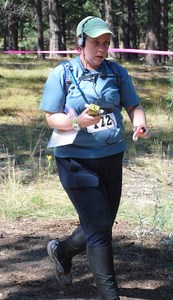
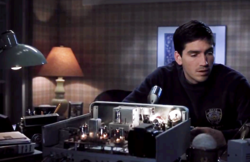
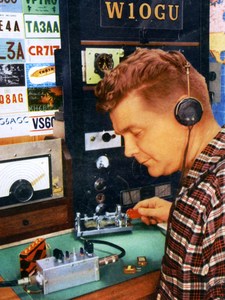
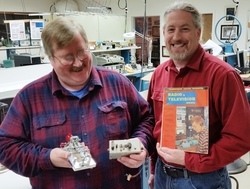
 List of US House Amateur Radio Parity Act Cosponsors Continues to Grow: Three more members of the US House of Representatives have stepped forward to cosponsor The Amateur Radio Parity Act, H.R. 1301. That brings the total to 123. The latest to sign on are Reps Evan Jenkins (R-WV), Stephen Knight (R-CA), and Charles Boustany Jr (R-LA). In a voice vote on February 11, the US House Subcommittee on Communications and Technology, chaired by Rep Greg Walden, W7EQI, sent
List of US House Amateur Radio Parity Act Cosponsors Continues to Grow: Three more members of the US House of Representatives have stepped forward to cosponsor The Amateur Radio Parity Act, H.R. 1301. That brings the total to 123. The latest to sign on are Reps Evan Jenkins (R-WV), Stephen Knight (R-CA), and Charles Boustany Jr (R-LA). In a voice vote on February 11, the US House Subcommittee on Communications and Technology, chaired by Rep Greg Walden, W7EQI, sent  Winter 2016 Edition of Radio Waves Now Available: The
Winter 2016 Edition of Radio Waves Now Available: The .png) ARRL VEC Applications, Session Scheduling Getting Back on Track: A computer program issue that was preventing the ARRL VEC from managing and posting its schedule of future examination sessions and transmitting application data from completed sessions to the FCC has been resolved, and the backlog is being cleared. "The ARRL IT Department has our system is back up and running," ARRL VEC Manager Maria Somma, AB1FM, said on March 2. "ARRL VEC has begun to transmit into FCC Electronic Batch Filing system the approximately 200 exam sessions that were waiting in the queue. It may take a few days to get through the entire backlog." Since the problem surfaced on February 22, the system had worked "sporadically," Somma said, allowing a few test sessions to make it to the FCC for processing.
ARRL VEC Applications, Session Scheduling Getting Back on Track: A computer program issue that was preventing the ARRL VEC from managing and posting its schedule of future examination sessions and transmitting application data from completed sessions to the FCC has been resolved, and the backlog is being cleared. "The ARRL IT Department has our system is back up and running," ARRL VEC Manager Maria Somma, AB1FM, said on March 2. "ARRL VEC has begun to transmit into FCC Electronic Batch Filing system the approximately 200 exam sessions that were waiting in the queue. It may take a few days to get through the entire backlog." Since the problem surfaced on February 22, the system had worked "sporadically," Somma said, allowing a few test sessions to make it to the FCC for processing.
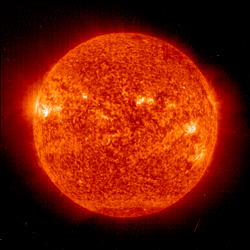 Predicted solar flux for the near term is 100 on March 3; 105 on March 4-5; 110 on March 6-10; 105 on March 11-13; 100 on March 14-15; 95 on March 16-20, and bottoming out at 90 on March 21-26. Flux values then peak at 115 on March 30-31.
Predicted solar flux for the near term is 100 on March 3; 105 on March 4-5; 110 on March 6-10; 105 on March 11-13; 100 on March 14-15; 95 on March 16-20, and bottoming out at 90 on March 21-26. Flux values then peak at 115 on March 30-31.







